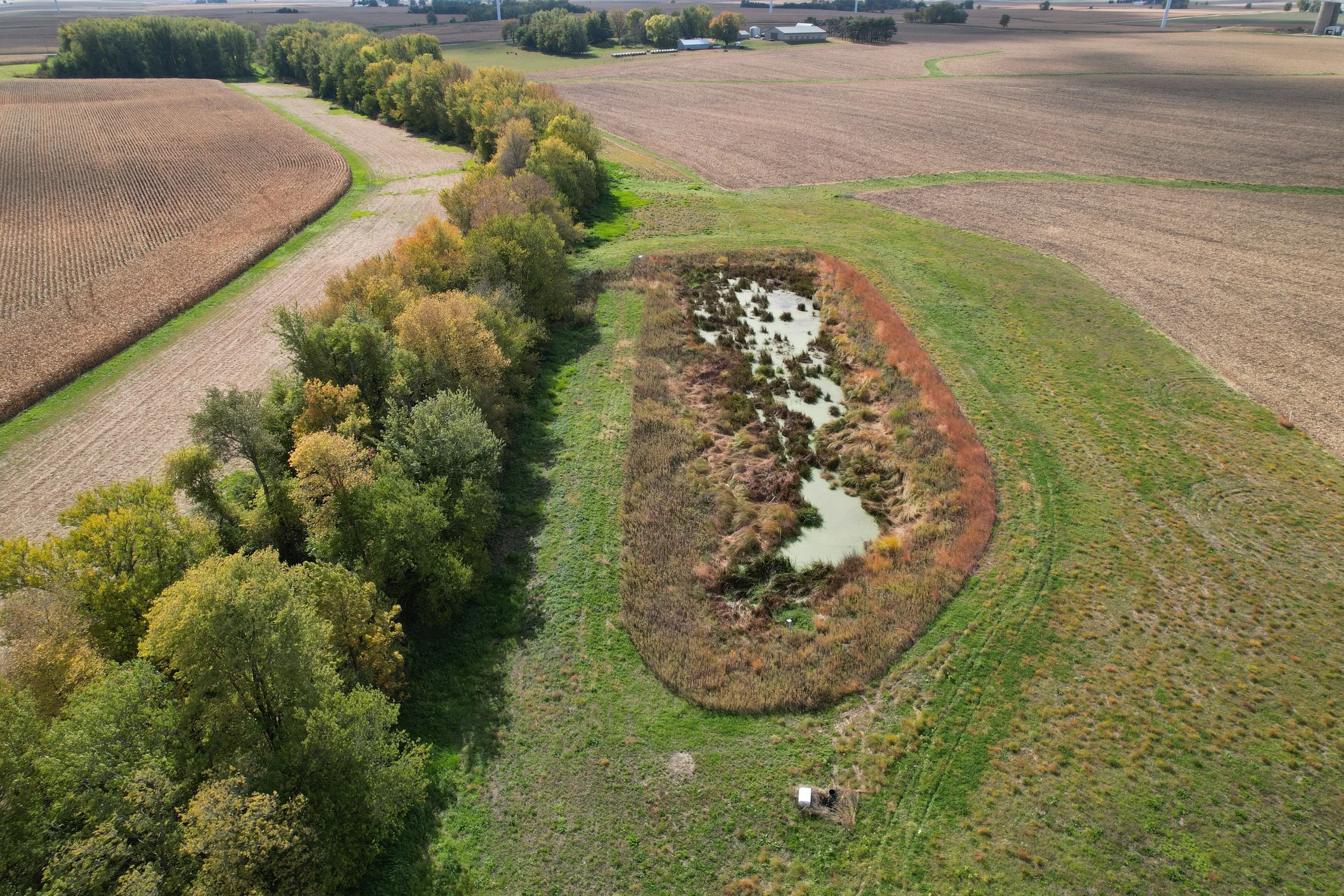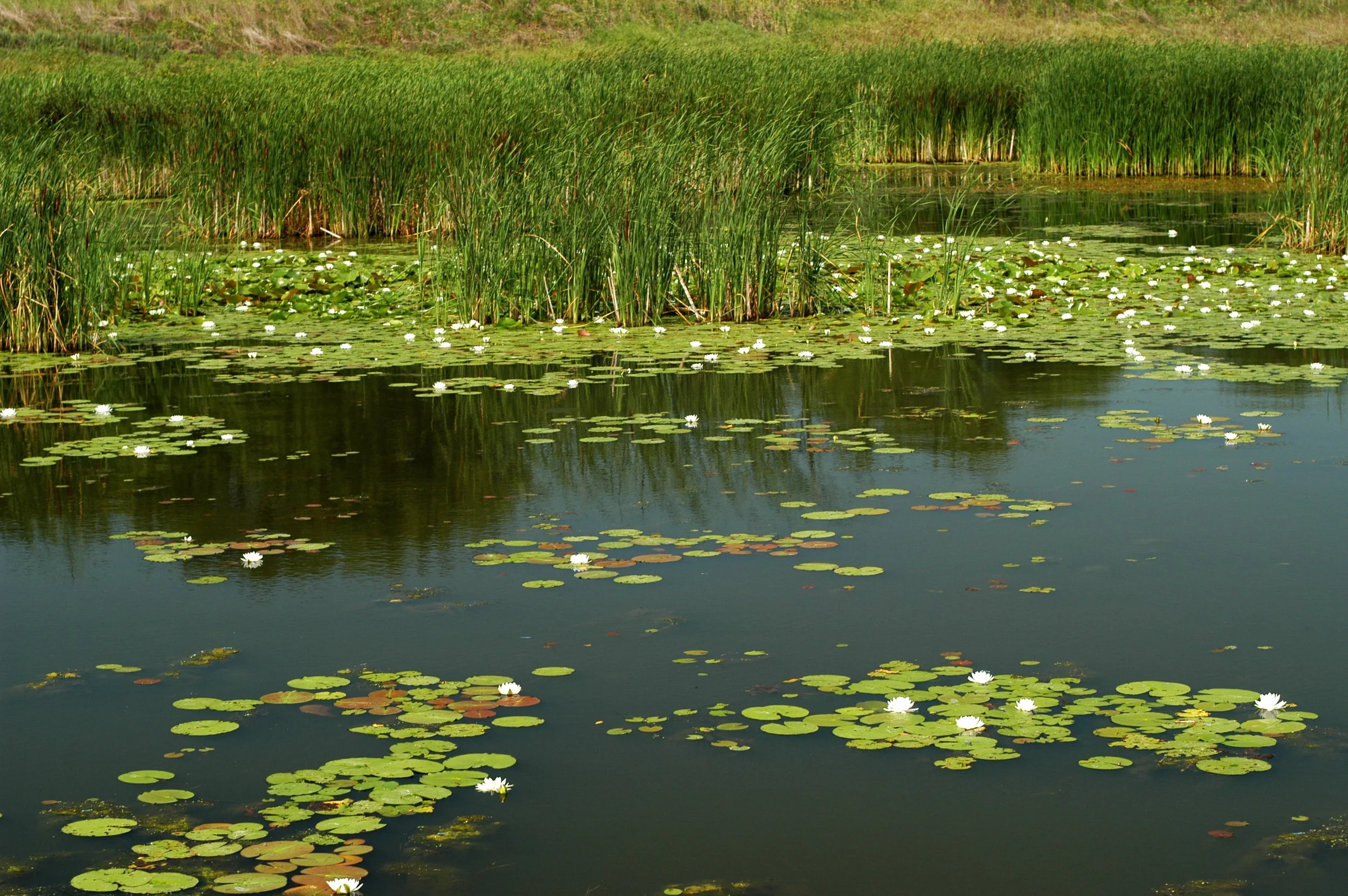At the microbial level, from a frog’s perspective, or a muskrat’s viewpoint there is not much difference between a restored wetland and a constructed wetland. Both wetland ecosystems provide the conditions for key wetland functions such as water quality improvement, floodwater storage, wildlife habitat, and recreational opportunities. However, at ground level, and especially from a bird’s-eye view, there are clear differences in layout and design purpose.
This is a recent photo of the Wetland’s Initiative’s first Smart Wetland. Built in the summer of 2015 it is located in Bureau County, IL.
In a satellite image, constructed wetlands or tile-treatment wetlands typically do not appear to be natural forms within the agricultural landscape, as they often have linear shapes, are surrounded by small dirt banks separating them from the surrounding cropland or dividing multiple wetland cells, and have specially designed interior ridges or islands. These wetlands are not natural systems that have developed over time, but instead, they are designed or engineered wetland treatment systems that use natural wetland processes involving the vegetation, soils, and their associated microbial communities to improve water quality.
Specific design aspects of constructed wetlands provide the conditions needed for maximum water quality improvement. For example, to “optimize” the removal of excess nitrate-nitrogen (the main pollutant in tile drainage) the water depth should be consistently between 12-18”. This depth promotes an emergent marsh vegetation community, supplies the maximum soil-water contact, and creates low-to-no-oxygen levels at the water-sediment interface, which are all needed to promote the conversion of nitrate to dinitrogen gas by denitrifying bacteria.
Restored wetlands are areas that were originally wetlands, but the hydrology, vegetation, or soils were altered or degraded by humans. The presence of hydric soils (soils developed under saturated conditions) indicates the areas that were formerly wetlands. Wetland restoration establishes conditions and functions similar to the original wetland before the disturbance.
The design goal is to restore hydrology, topography, native vegetation, and natural processes. Wetland restoration typically focuses on developing habitats to support a variety of plants, insects, amphibians, reptiles, birds, waterfowl, and mammals. Restored wetlands blend into the surrounding landscape, as they are a continuum of integrated habitats with an overlap between different plant communities as water depths change.
Constructed wetlands can be created on land that was never a wetland or on former wetlands that are now farmed. Like a restored wetland, native hydrophytic vegetation (“water-loving” plants suited to grow where it’s wet) will be planted or seeded, and the microbes and wildlife communities adapted to these wet conditions will flourish over time. However, the diversity of plants is limited to those species that are tolerant of high nutrient levels and varying water levels (flooded to dry periods). Smart Wetlands are constructed wetlands, as Smart Wetlands are designed and sited specifically to capture and treat cropland tile drainage runoff.
Support for the development of this blog and video was provided by the Mississippi River Network. The Mississippi River Network (MRN) is a coalition of 58 organizations dedicated to creating a healthier Mississippi River by working for the well-being of the people, land, water, and wildlife of America’s largest watershed. The Wetlands Initiative is a proud member of this organization.


